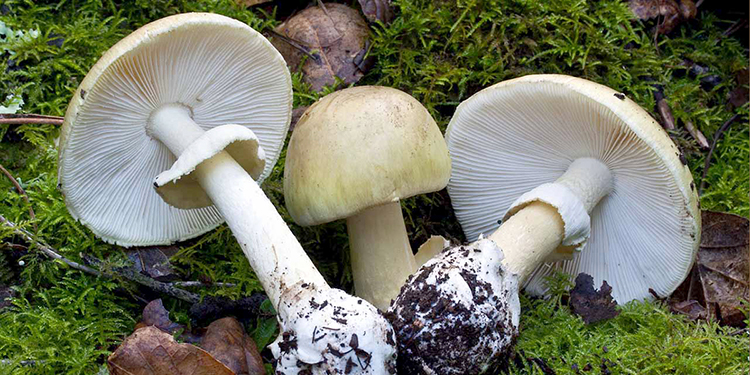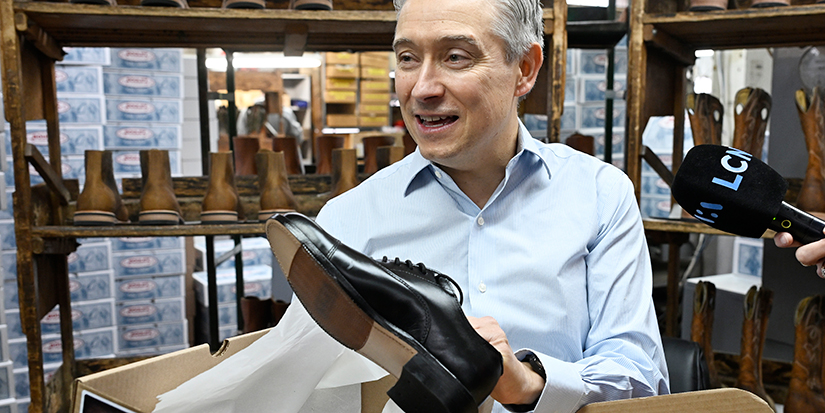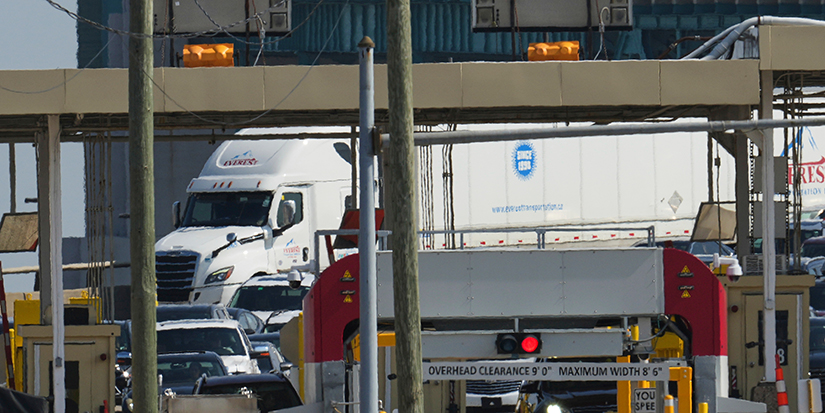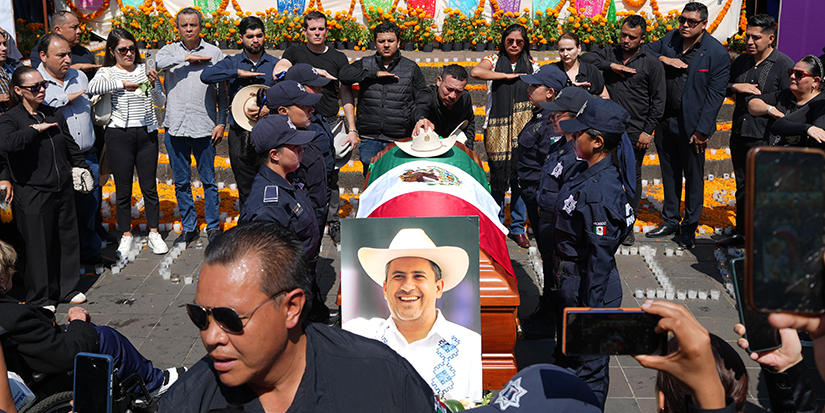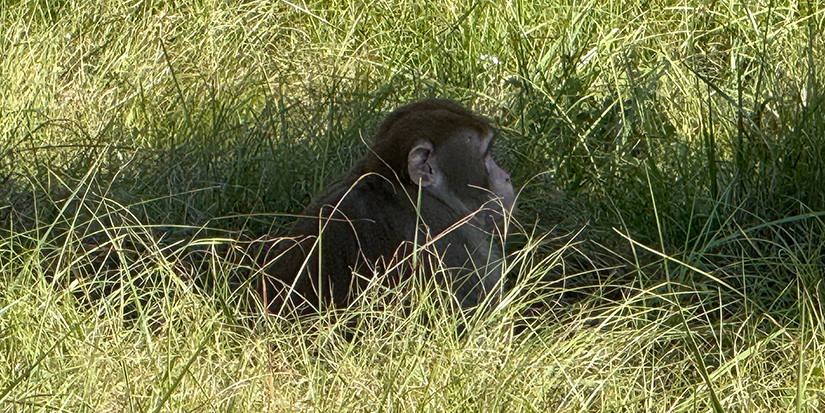Latest News
Innocuous, insidious killer mushrooms under our trees
Published 4:51 PDT, Wed October 24, 2018
Last Updated: 2:12 PDT, Wed May 12, 2021
They don’t look like much. They are
unremarkable mushrooms. Not the flashy bright red ones with white spots. Not
the ones that grow to the size of a saucer. Death Cap mushrooms, properly known
as Amanita phalloides, (“Amman ee’ta fah loy’ deez”) do look like exotic
Asian straw mushrooms and therein lies the problem.
According to mushroom expert, Paul Kroeger, “We
have had confirmed incidents in BC. (Since they were first found in the
province in 1998). The first man in Victoria ate them mistaking them for puff
balls then in 2003. In 2008 a Korean woman in Richmond who gathered them in
Langley, mistaking the Amanitas for Asian straw mushrooms. Kroeger said while
the diagnosis was clear from the beginning, the source of the mushrooms was
clouded by a language and cultural barrier.
“The
third case was the fatal case of 2016 in which the three-year-old child from
Victoria died,” he says.
Amanita mushrooms don’t taste bad. You can
eat some as a test and seem fine, at the time. So just sampling one and seeing
if you feel fine is a bad idea, according to Kroeger. That’s the whammy. "Several
hours after eating them, the mushrooms give you symptoms comparable to violent
food poisoning," he says.
Most people recover from that, for a while.
“Amanitas
can be lethal. They cause destruction of the liver and of the kidneys also.
They have complex toxins that are not broken down by cooking, boiling, or
drying. That have a long delay before the first symptoms. They only come to
medical attention after severe damage has begun to be afflicted on the organs.”
The saddest case, is the little boy in
Victoria who died from eating soup that had a few Death Cap mushrooms in it. Again,
the adults had thought they were Asian straw mushrooms.
One mushroom can be lethal dose for a
full-sized adult according to Lorraine McIntyre of the B.C. Centre for Disease
Control.
Consulting Mycologist Kroeger gets specific
with the timeline: “It frequently has a delay of six to 12 hours after eating
before you feel sick. And then there will be severe cramping, vomiting,
diarrhea sometimes containing blood and that will continue for several hours
and then there is a remission.”
That means you seem to get much better but,
you aren’t.
Kroeger describes what happens when you seem
to recover, “At this time, these complex toxins have been broken up in the body
and are circulating in the blood stream.“
Where they set to work on your liver and
other internal organs, destroying them.
“Then,
you get a second wave effect, approximately three days after ingestion, with
very severe symptoms including signs of impending liver failure.” Kroeger warns
that if you appear to be jaundiced, seek immediate medial care. Tell them if
you have been eating wild-gathered mushrooms.
The liver failure is often terminal. With a
bit of damage, the liver can repair itself but with complete liver failure, the
only treatment is a liver transplant. In that case, there is rarely time
between the diagnosis and death to find a donor.
Though, people with a very low dose, well
less than one mushroom, have been known to survive.
Amanitas can look unremarkable to the
untrained eye.
“They have caps that tend to have a greenish
colour, pale or greenish brown or greenish yellow colour but sometimes the the
green will be very faint to almost white, yellowish, browning.” There are other
distinguishing characteristics but Kroeger cautions only to pick and eat
wild-gathered mushrooms you are absolutely sure of.
“If you suspect they’re growing in your yard,
send a photo to info@vancmyco.com
or take them to the Mushroom Showat the Richmond Nature Park Nov. 4 from 11 a.m. to 4 p.m.” he
says.
“I’d like to stress there are hundreds of
species of mushrooms growing with trees and they have an overall beneficial
effect. The vast majority are not harmful. We encourage people not to make war
on mushrooms because the vast majority are not dangerous and actually help the
trees,” Kroeger says.
Kroeger cautions, pick only the one or more
varieties you can definitely identify as safe. If in any doubt, don’t eat it.
If you think you or someone you know may have
eaten a Death Cap mushroom, call the BC Drug and Poison Information Centre at
the BC Centre for Disease Control at 604-682-5050 or 1-800-567-8911.
Mushrooms, the part we see and sometimes eat,
are actually just the fruit, like apples are to apple trees. The part we can’t
see, the mycelium, is made up of microscopically small bits that can spread up
to a mile underground.
Kroeger says, “They can live with the tree
roots for a long time before they actually make the mushrooms. They grow
underground with the tree roots. Amanitas may be introduced with tree roots
(when the trees are planted) and may not be visible until the tree reaches
maturity.”
Like many mushrooms we see growing around the
lower mainland, Death Caps piggy-backed into our area on the roots of imported
trees, originally from Europe. It has taken years for the underground part of
the mushrooms to mature to the point of fruiting, producing spores that can
them be spread to other areas. They have meandered up the west coast.
Their North American timeline shows that it
takes about 20 years for the above-ground mushrooms with spores, the mushroom’s
seeds, to appear.
“Amanita phalloides were first found in
California in 1938 in the Del Monte Hotel in Delray. Then it was a few decades
later that they were found in Oregon. A couple decades on from that, death cap
mushrooms were found in Washington State. Then, a couple decades later in B.C.
in 1997, they were found in Mission under sweet (edible) chestnuts. They were
found in Victoria in 1998 under a beech.”
While Vancouver has been mapped, Richmond has
not yet been surveyed for death cap mushrooms.
“Amanita phalloides can grow with a variety
of trees--conifers and broadleaf trees--but so far, they have been found
exclusively with broad leave trees--oaks, hornbeams, (edible) chestnut, filbert
or hazelnut, linden trees and beech.”
“If know you have these mushrooms in your
yard, they can be removed as frequently as they pop up. Put them in the regular
garbage or they can be thrown in municipal green bin. DO NOT put them into home
compost units; that may not kill off the spores.”
He also warns, “Do not kick and stomp them.
This only helps to spread the spores. We recommend that people clear them out
before mowing the lawn so you don’t chop them up and spread them with the lawn
mower.”
And, during the dry weather, you can not only
conserve scarce water, you can discourage amanitas’ growth. “If you have them
growing on your property, refrain from watering during dry season because
watering can promote early and heavy fruiting of them.”
You don’t need to wear gloves to pick the
amanitas from your lawn because, Kroeger says, “The toxins are not known to
pose a risk for brief gentle handling but to prevent transfer of toxins to
other things, you should definitely wash your hands with soap and water if you
handle them.”
He goes on to say don’t use alcohol in wipes
or jells because they could actually allow the poison to get into your body
through the skin so don’t use hand sanitizer or baby wipes.
If you have questions, you can join a
mushroom club, like the Vancouver Mycological Society.Their next meeting is Nov. 13 with
a talk on at the Van Dusen Floral Hall November 13 @ 7:30 to 9 p.m. where
Dr. James Kronstad will present “Fungal threats to human health.” The former
Director of the Michael Smith Labs at UBC, Dr. Kronstad has spent most of his
professional life researching fungi in the UBC dept. of Immunology and
Microbiology.
“All in all it is great to get the information about death cap mushrooms to Richmond residents because we suspect they may well be lurking there somewhere,” says Kroeger.
For more information from the BC Centre for
Disease Control on death cap mushrooms in BC click.
